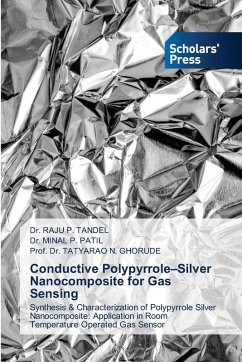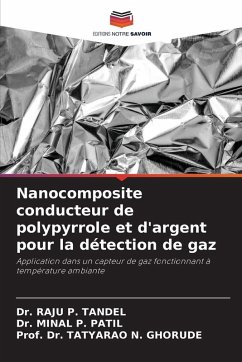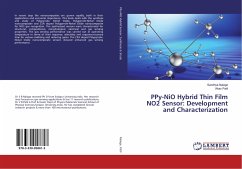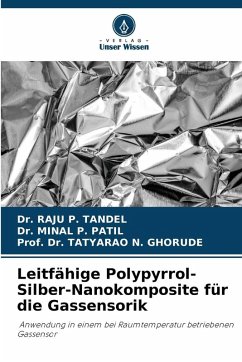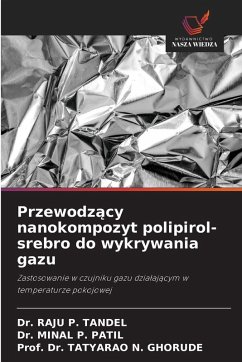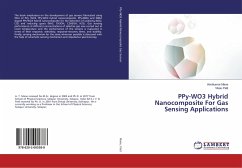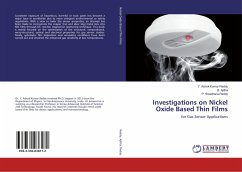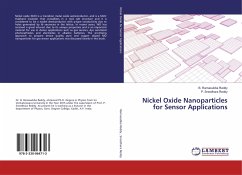
Study of Polypyrrole Gold Nanocomposite based Gas Sensor
Synthesis and Characterization of Polypyrrole Gold Nanocomposite and application in Room Temperature operated Gas Sensor
Versandkostenfrei!
Versandfertig in 6-10 Tagen
58,99 €
inkl. MwSt.

PAYBACK Punkte
29 °P sammeln!
This book focuses on the development of room-temperature operated gas sensors made of PPy composites for the detection of hazardous gases like ammonia, with potential applications in biomedicine and industry. A significant advancement in gas sensor technology is In-situ chemical oxidative polymerization of pyrrole using novel dopant and oxidant. The investigation also covers the fabrication of metal oxide and noble element nanoparticles, screen-printing thin films on interdigitated electrodes, and in-situ chemical polymerization as a means of forming nanocomposite formation. At room temperatur...
This book focuses on the development of room-temperature operated gas sensors made of PPy composites for the detection of hazardous gases like ammonia, with potential applications in biomedicine and industry. A significant advancement in gas sensor technology is In-situ chemical oxidative polymerization of pyrrole using novel dopant and oxidant. The investigation also covers the fabrication of metal oxide and noble element nanoparticles, screen-printing thin films on interdigitated electrodes, and in-situ chemical polymerization as a means of forming nanocomposite formation. At room temperature, a number of characteristics of the sensors and photocatalysts are examined, including sensitivity, selectivity, and stability over time. Several techniques are employed in the characterization of the powdered nanocomposite, such as FTIR spectroscopy for the chemical composition of smaller particles, UV-Visible spectroscopy for band gap analysis, XRD for crystal structure determination, and SEM as well as TEM for structural and morphological analysis. A brief overview and several in-depth chapters on the use of poisonous gas sensors are provided in this book.



